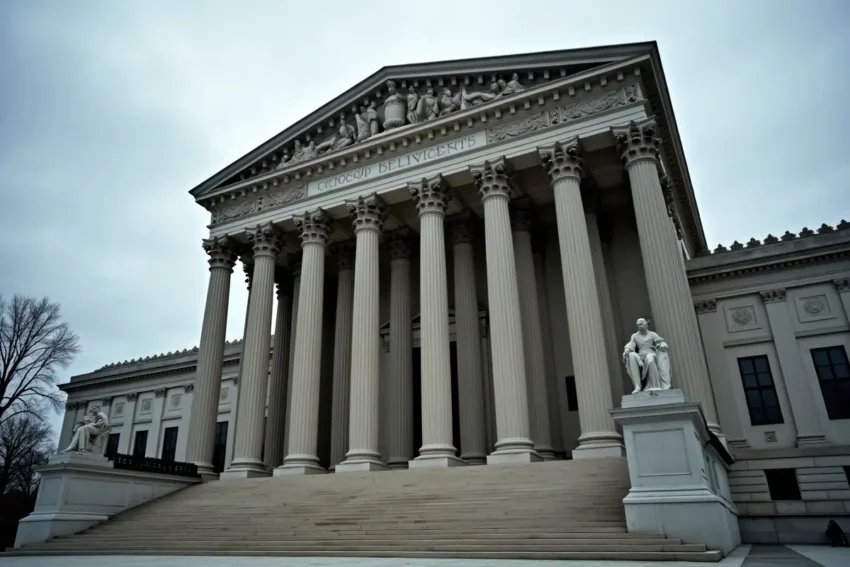Many survivors face harm not only from individuals but also from institutions that ignored warning signs. A Phoenix sexual abuse lawyer investigates organizational negligence to hold both perpetrators and enablers accountable. This article explains why systemic failures often play a critical role in abuse litigation.
The Role of Systemic Negligence in Abuse Cases
Institutional Blind Spots
Institutions, whether they are schools or churches, often face challenges that stem from systemic negligence. This negligence can manifest as a lack of policies, inadequate training, or failure to act upon warnings.
When these institutions fail to establish robust safeguarding measures, they inadvertently create environments where abuse can occur unchecked. These “blind spots” allow abusers to exploit the system, often leaving victims without protection or recourse. Addressing these shortcomings is critical in preventing future harm.
Inadequate Reporting Structures
A common issue in systemic negligence is the inadequacy of reporting structures within institutions. Many organizations lack clear, secure channels for reporting abuse, leading to underreporting and a culture of silence.
In some cases, victims are unaware of how to report incidents or fear repercussions. Institutions must develop transparent reporting processes to ensure that all complaints are promptly heard and addressed. Without these structures, the risk of repeated abuse is significantly higher.
Failure to Enforce Policies
Even when institutions have policies in place to protect individuals, failure to enforce these policies can lead to significant civil liability. Schools and churches may have written procedures for handling abuse cases, but if they are not consistently implemented, they become ineffective.
Regular training and audits can help ensure that staff are equipped to recognize and respond to potential abuse situations. By rigorously applying existing policies, institutions can demonstrate their commitment to protecting individuals and reducing their liability.
Legal Framework: How Civil Liability is Established
Understanding Civil Liability
In cases of abuse within institutions like schools or churches, it’s crucial to understand how civil liability works. Civil liability arises when an organization or individual is held legally responsible for causing harm or failing to prevent it.
Unlike criminal liability, which focuses on punishing unlawful behavior, civil cases aim to compensate victims for the injuries they’ve suffered. At the heart of civil liability is the concept of accountability, ensuring that those who neglect their duty of care are held responsible for the consequences.
Duty of Care and Breach
At the heart of establishing civil liability is the concept of duty of care. Institutions such as schools and churches are expected to provide a safe environment for those under their supervision. When this duty is breached, through negligence, omission, or willful ignorance, they can be held liable.
For instance, if a school fails to conduct adequate background checks on employees and a staff member subsequently abuses a student, the institution may be deemed negligent.
Proving Negligence
Proving negligence involves demonstrating that the institution had a duty of care, breached that duty, and directly caused harm as a result. This process often requires a detailed examination of institutional policies, procedures, and actions taken—or not taken—when warning signs were evident.
Legal professionals specializing in abuse cases frequently collaborate with experts to dissect these elements, ensuring that both the perpetrators and the enabling institutions are brought to justice.
Institutional Accountability
Pursuing accountability against institutions serves two critical purposes: securing justice for victims and driving meaningful reform. By confronting the failures that allowed abuse to occur, these legal actions push organizations to make changes that reduce the risk of future harm.
Beyond individual cases, this process has a wider impact; it helps restore trust in schools, churches, and other community institutions by showing that negligence will not go unaddressed.
The Importance of Accountability: Holding Institutions Responsible
Understanding Accountability in Institutional Settings
Institutional accountability is paramount in addressing abuse cases within schools and churches. These settings are often pillars of trust in communities, responsible not only for education and spiritual guidance but also for ensuring the safety and welfare of individuals, particularly children.
When these institutions fail in their duty of care, the consequences can be devastating. Legal responsibility arises not just from direct perpetrators but from the systemic failures that allow abuse to occur unchecked.
Recognizing Systemic Failures
Systemic failures often manifest in various forms, including inadequate policies, poor reporting mechanisms, and insufficient staff training. For example, if a school lacks a clear protocol for reporting suspected abuse, this can contribute to a culture of silence. Similarly, churches that fail to conduct thorough background checks on employees and volunteers may inadvertently expose individuals to harm.
- Inadequate Policies: Weak or absent policies regarding abuse allegations can lead to the mishandling of cases.
- Poor Reporting Mechanisms: Ineffective channels for reporting can deter victims from coming forward.
- Insufficient Training: Untrained staff may fail to recognize signs of abuse, thereby missing critical opportunities to intervene.
The Role of Legal Action
Taking legal action is often the most effective way to hold institutions accountable for negligence. When schools, churches, or other organizations are required to face the consequences of their failures, it reinforces the principle that systemic shortcomings will not be tolerated. Beyond providing justice for victims, lawsuits can spark meaningful reforms, leading to stronger policies, improved protections, and safer environments for the future.
Final Thoughts
As we consider the complexities of civil liability in abuse cases, it becomes clear that institutions such as schools and churches must commit to meaningful reforms to protect those in their care. Understanding how individual actions intersect with broader institutional negligence highlights the importance of accountability in creating safer environments.
Legal professionals, including a Phoenix sexual abuse lawyer, play a critical role in this process by guiding survivors through the challenges of litigation and pursuing justice on their behalf. Addressing these institutional failures not only honors the bravery of survivors but also helps ensure that future generations are safeguarded from similar harm.

